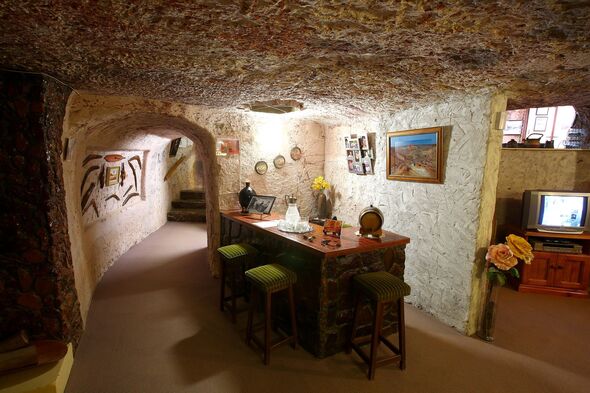Coober Pedy is loosely translated from the indigenous Australian term meaning “white man in a hole”. This is rather fitting, considering 60 percent of this opal mining town’s 2,500 residents now live underground in “dugouts“, built into the iron-rich sandstone and siltstone rock. They do so to avoid the staggeringly high temperatures of 52C.
Such temperatures are so high that birds have been known to fall from the sky and electronics have to be stored in fridges.
This eerie town lies in northern South Australia, 526 miles north of Adelaide and 428 miles south of Alice Springs.
It is found on the edge of the erosional scarp of the Stuart Ranges. Very little plant life exists in the town due to the region’s low rainfall, high costs of water and lack of topsoil.
Yet this community is not the world’s first underground settlement. Human ancestors in South Africa lived in caves two million years ago and there is evidence of Neanderthals in French grottos during the Ice Age 176,000 years ago. Even chimpanzees have taken to caverns to cool down in southeastern Senegal.
At the other end of the scale, temperatures can plummet to as low as 2 or 3C. Yet, in these dugouts, temperatures are maintained at a pleasant 23C.
In some neighbourhoods, the only signs of habitation are the ventilation shafts sticking out through the ground and excess soil dumped near the entrances. These ventilation shafts ensure an adequate supply of oxygen and allow moisture to escape.
This is due to the fact that the houses must be at least four metres deep to prevent the roofs collapsing.
The rock is “very soft, you can scratch it with a pocket knife or your fingernail,” said Barry Lewis, who works at the tourist information centre to BBC in August last year.
Amazingly, the dugouts are structurally sound without supports, making it possible to carve high ceilings in any shape desired. As such, the town is home to underground swimming pools, games rooms, impressive bathrooms and high-spec living rooms.
The homes are also incredibly economical. The town generates all of its own electricity, 70 percent of which is powered by wind and solar energy. There is no need for aircon thanks to the pleasant maintained temperature, unlike on the surface.
The dugouts are also incredibly affordable in comparison with Adelaide. During an auction, the average three-bedroom house sold for around £21,000. In Adelaide, the average house price is £361,000.
The first opal was discovered in 1915, after which the town was established. Today, opals continue to be found during excavations for new builds. One man discovered a large gem while installing a shower and a hotel found an opal worth £774,000 while building an extension, the BBC said.
While it is still possible to excavate by hand, today industrial tunnelling equipment is used, which could create a dugout in less than a month, resident Jason Wright told the BBC. When a resident decides they need more space, it is not unheard of to accidentally knock through into a neighbour’s home.
Visitors’ attractions in Coober Pedy include the mines, graveyard and underground churches including the Serbian Orthodox Church of Saint Elijah the Prophet, built in 1993. The dugout of crocodile hunter and Second World War soldier Arvid Blumenthal, or “Crocodile Harry”, who inspired the enormously successful 1980s Crocodile Dundee film franchise, is also a key tourist spot.
Several motels also offer underground accommodation, as the town has become a popular stopover point since the sealing of the Stuart Highway.
